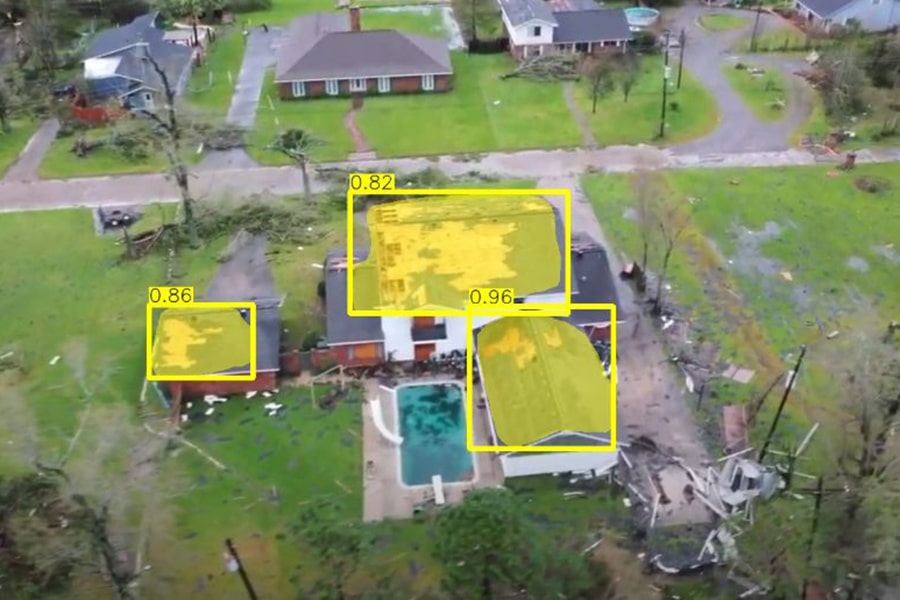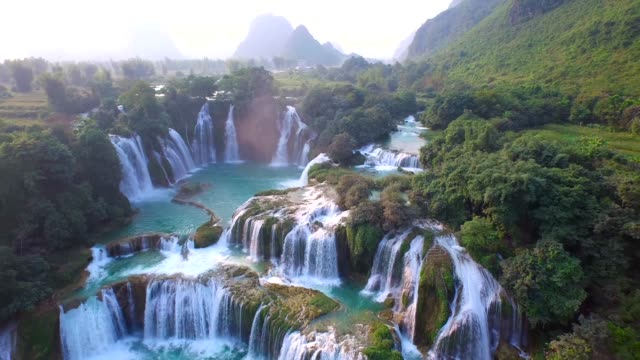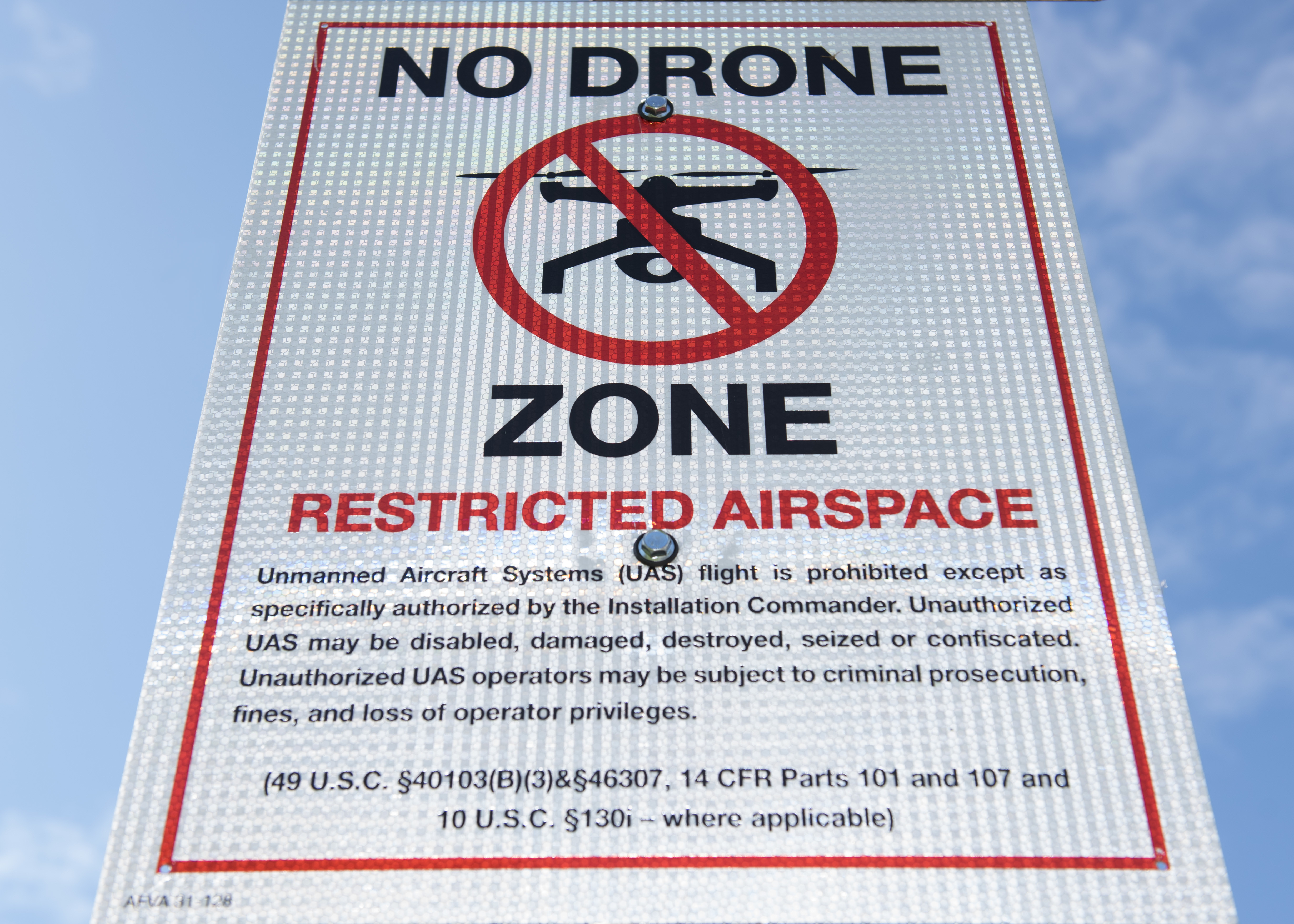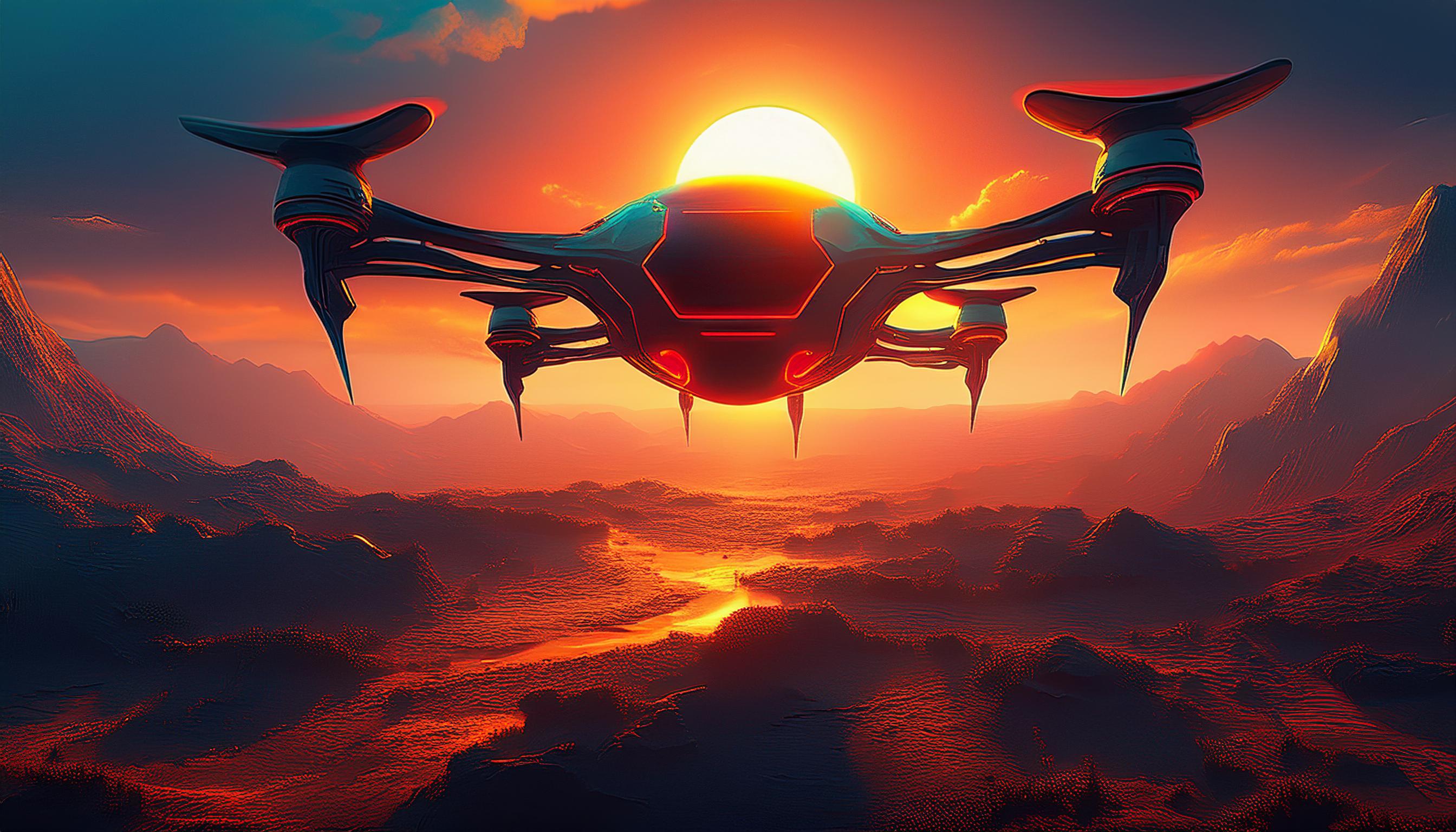UAV Drones
Drones
1 | / \ |
📖 Introduction
Drones, or Unmanned Aerial Vehicles (UAVs), have evolved from military tools to devices reshaping industries and daily life. This article breaks down their mechanics, societal impacts, and transformative roles in agriculture, warfare, and humanitarian efforts.
Historical Evolution of Drones
Drones have a rich history, evolving from experimental designs to sophisticated machines:
- 1907: The Bréguet brothers built the first quadcopter, a precursor to modern drones, lifting off with human assistance.
- 1917: The British “Aerial Target” introduced radio-controlled flight for military training.
- 1935: The term “drone” emerged with the DH.82B Queen Bee, a target practice aircraft.
- 1940s-1970s: Military drones expanded during the Vietnam War for reconnaissance and combat.
- 1990s: GPS and computing advancements enhanced drone precision.
- 2000s-Present: Consumer drones took off, led by companies like DJI.
Visual Aid:

Caption: Key milestones in drone history from 1907 to today.
What Are Drones?
Drones are aircraft without human pilots. Key components include:
Drone Components
| Component | Function | Material/Tech Used |
|---|---|---|
| Frame | Structural base | Carbon fiber, plastic |
| Propellers | Generate lift & thrust | Nylon, carbon fiber |
| Battery | Powers flight (15–30 mins avg.) | Li-Po/Li-ion batteries |
| Sensors | GPS, LiDAR, thermal imaging | CMOS/CCD sensors |
| Controller | Manual/Autonomous control | Radio signals, AI software |
Anatomy of a Drone
Understanding how drones work is easier when you break them down into their core systems.
Flight Control & Propulsion
- Motors & Propellers: Generate lift and thrust; configurations (quad, hexacopter, etc.) impact performance.
- Electronic Speed Controllers (ESCs): Regulate power to the motors for smooth operation.
- Flight Controller (FC): Acts as the “brain,” processing sensor data to maintain stability and execute flight commands.
Block Diagram – Flight System:
Navigation & Positioning
- GPS: Provides accurate location data for waypoint navigation.
- Inertial Measurement Unit (IMU): Combines accelerometers and gyroscopes to track orientation.
- Barometer: Measures altitude via atmospheric pressure.
Sensors & Obstacle Avoidance
- Vision Sensors & TOF Cameras: Detect obstacles and measure distances, crucial for autonomous flight and landing.
- Infrared Sensors: Paired with vision systems, they offer precise height measurements and assist in safe landings—especially when optical sensors may struggle.
- Ultrasonic Sensors: Occasionally used to enhance obstacle detection in low-light or complex environments.
Communication Systems
- Wireless Transceivers: Enable real-time control, telemetry, and sometimes live video streaming.
- Data Links: Ensure continuous communication between the drone and its pilot, allowing for autonomous flight updates.
⚙️ How Do Drones Work?
- Takeoff: Propellers spin → upward thrust.
- Stabilization: Gyroscopes adjust pitch/roll/yaw.
- Navigation: GPS maps route; obstacle sensors avoid collisions.
- Data Capture: Cameras/sensors collect info → transmitted to ground station.
- Landing: Automated or manual descent.
Drone Workflow
- Flight Control: A flight controller adjusts the speed of the motors to control direction, altitude, and stability.
- Communication: A wireless controller (radio, Wi-Fi, or satellite) connects with the drone for live instructions or telemetry.
- Sensors: Drones use sensors like GPS, gyroscopes, and cameras to process real-time data.
- Autonomous Navigation: Advanced drones with AI can avoid obstacles or follow programmed flight paths.
Key Uses and Functions of Drones
1. Agriculture
Drones boost precision agriculture through crop health monitoring, irrigation analysis, and pest detection. Equipped with specialized sensors like multispectral cameras, they can deliver tailored applications, such as pesticide spraying.
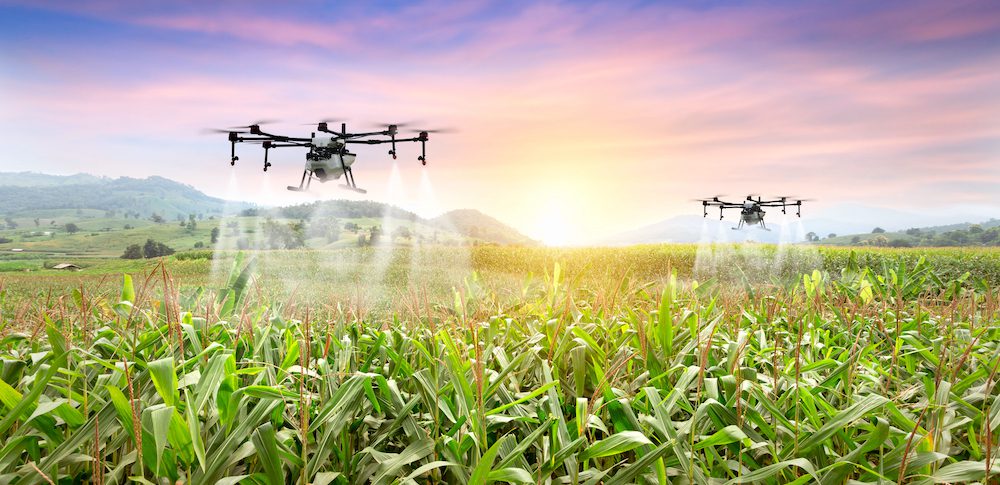
Example:
A drone scans an entire farm, identifies areas with poor crop health, and informs the farmer to take optimized action.
2. Delivery Services
Drones are at the forefront of last-mile delivery. Companies like Amazon and UPS use them to deliver parcels, minimizing delivery times and reducing fossil fuel emissions.
A visual representation of drones delivering packages.
3. Emergency Response
Drones save lives during disaster response. They survey areas hit by hurricanes, locate stranded victims, and deliver medical supplies swiftly.
Example:
A drone inspecting the area after giant wind storms.
4. Filmmaking and Photography
Drones capture shots that were once only possible with helicopters. They’ve transformed cinematography, offering aerial views for everything from Hollywood blockbusters to travel vlogs.
An example of drone footage capturing stunning landscapes.
5. Military Applications
Drones remain pivotal to military operations, used for intelligence gathering, surveillance, and even combat. They reduce risks to personnel by executing high-stakes missions remotely.

6. Humanitarian Aid
Drones deliver medical supplies, food, and essential goods to remote or disaster-stricken areas. They played a major role during the COVID-19 pandemic, ensuring timely vaccine delivery.

The Value of Drones
Key Benefits
| Feature | Description |
|---|---|
| Cost Efficiency | Drones replace expensive tools (e.g., helicopters) for aerial surveys, cutting costs. |
| Accessibility | Operate in hard-to-reach or dangerous locations, such as mountain ridges or active volcanoes. |
| Precision | Perform tasks such as crop spraying or industrial inspections with pinpoint accuracy. |
| Speed | Accomplish tasks faster, such as mapping entire fields or delivering supplies in emergencies. |
The Extended Impacts of Drones
While drones offer numerous advantages, they also have broader implications, both positive and negative.
Positive Impacts
- Economic Growth: New industries and jobs are being created (e.g., drone pilots, service maintenance).
- Sustainability: Precision agriculture drones reduce chemical waste, benefiting the environment.
- Safety: Drones prevent human risks in tasks like industrial inspection or disaster assessment.
Negative Impacts
- Privacy Concerns: Unauthorized drones used for surveillance may invade personal or corporate privacy.
- Security Risks: Drones can potentially be weaponized or misused (e.g., for smuggling contraband).
- Job Displacement: Automated delivery drones could replace human delivery roles.
- Ethical Concerns in Warfare: Drones have escalated remote-control warfare, raising civilian safety issues.
Drones and Regulation
Governments worldwide are enacting new laws to regulate:
- Airspace Restrictions: Drones can’t fly near airports or military zones.
- Registration: Pilots must register their drones above specific weight limits.
- Operational Guidelines: Rules like altitude limits and no-fly zones keep civilian safety in mind.
A simple sign showing restricted air zones for drones.
The Future of Drones
The drone industry is on the verge of major breakthroughs:
- Urban Air Mobility: Drones could become flying taxis, revolutionizing transportation in crowded cities.
- Smart Cities: Drones may integrate with infrastructure, managing traffic, and monitoring construction progress.
- Space Exploration: NASA’s “Ingenuity” drone on Mars demonstrates UAVs’ extraterrestrial potential.
DJI
Founded in 2006 by Frank Wang, DJI grew from a dorm room venture into the world’s top consumer drone manufacturer, holding over 90% of the market by 2024. Key milestones include:
- 2013: Phantom series launched, making drones user-friendly.
- 2015: Inspire series targeted professional filmmakers.
- 2016: Mavic Pro introduced compact, high-performance drones.
- 2020: Mini 2 refined lightweight designs.
DJI’s innovations—stabilization, obstacle avoidance, and smart flight modes—set industry standards.
:no_upscale()/cdn.vox-cdn.com/uploads/chorus_asset/file/19772495/MAVICPOSTER16x20.jpg)
DJI: Leading the Drone Revolution
DJI product lines include:
- Phantom Series: Known for pioneering aerial photography with integrated cameras.
- Mavic Series: Celebrated for portability and advanced obstacle avoidance features.
- Inspire Series: Designed for professional filmmakers requiring high-quality imaging.
- Matrice Series: Industrial-grade drones that support multiple payloads like thermal and LiDAR sensors.
Highlight – DJI Innovations:
- Intelligent Flight Modes: Automated tracking, orbit, and waypoint navigation.
- Obstacle Avoidance: Multi-directional sensors (including IR and TOF) that keep drones safe.
- Mapping Software (DJI Terra): Transforms raw imagery into detailed maps and models for various industries.


